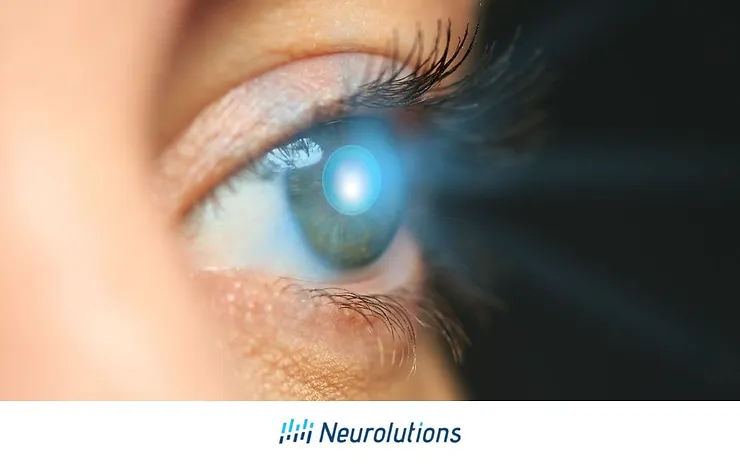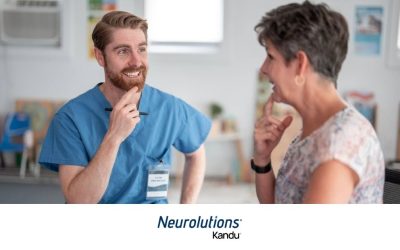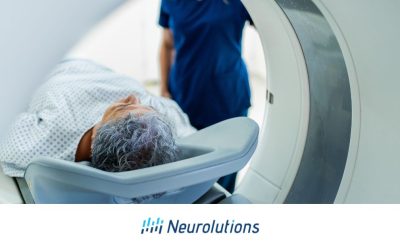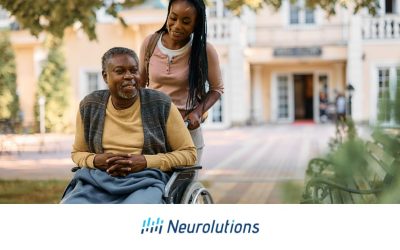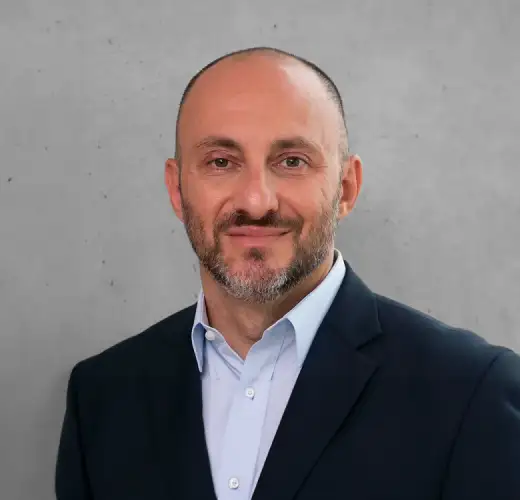What is a Vision Problem?
Vision is used for everything. Vision is considered a dynamic, learned process, and it impacts our ability to learn and engage from infancy into adulthood.
The consequences of visual problems following a stroke are vast. They may include, but are not limited to:
- Difficulty with reading
- Problems with self-care (dressing, personal hygiene)
- Inability to work, be productive, engage in leisure activities
- Injury caused by falls, bumping into things, mishaps while interacting with objects and boundaries
- Impaired sense of balance and equilibrium
- Greater dependence on others for everyday tasks, as well as community mobility
- Withdrawal from society and human connection
Why Did My Stroke Cause a Vision Problem?
Although eyesight (i.e. seeing) may be compromised following a stroke, damage to the eyeballs itself is not always the issue.
Strokes may cause havoc to the visual system itself, such as the retina, optic nerve, macula, and more. Vision disorders may also reflect problems in other parts of the brain and nervous system, such as the brainstem, cranial nerves, or cerebellum, causing changes in visual perception as well.
Clinical stroke symptoms and imaging can help identify a stroke’s underlying cause, severity, and treatment.
Screening Questions for Visual Problems After Stroke
Even though vision impairment can be evident after a stroke, there are occasions where a vision problem is missed, overlooked, or misinterpreted for another issue. If you or a loved one had a stroke and you think you may have a visual problem, make sure a physician or a therapist takes time to focus on your concerns to get you started on proper treatment, if applicable.
Take some time to reflect on these screening questions related to vision problems after a stroke:
- Have you noticed any differences in your vision since your stroke?
- Do you have double vision/see double?
- Do you feel clumsy interacting with objects and your environment?
- Do you have trouble locating objects?
- Do you think your prescription (for visual correction) has changed?
- Do you have headaches?
- Do you lose focus or have trouble concentrating?
- Have you noticed any difference in your ability to read?
- Is your vision problem causing an issue with your balance?
- Are you dizzy?
- Have family or friends noticed changes that the stroke survivor has not?
If you answered yes to one or more of the above-screen questions, it is worth having a discussion with your physician in order to either self-manage your vision problems or get professional intervention.
While some physicians employ a “give it some time” approach in which no immediate action is taken while the brain heals, early intervention is also widely practiced – check out this stroke timeline. There are many awareness and compensation strategies and devices that can be used to function more successfully as the brain adapts. There may be exercises that can be started immediately to restore skills in the visual and perceptual systems before problems worsen. In fact, many argue that one can do a lot to shape and remodel pathways for more successful outcomes.
Bottom line: If there is a potential problem with your vision, get checked by someone who is aware of vision changes that may follow having a stroke.
Types Of Vision Problems and Disorders After a Stroke
Eye or vision problems after a stroke may occur because of the following:
Visual Acuity Problems
- Difficulty seeing fine detail with the eye. 20/100 means a person can see at 20 feet what others can see at 100 feet. Legally blind is defined as 20/200 or worse in the better eye. Low vision is 20/60 or 20/40, depending on the source.
Diplopia
- Double vision is when pictures in the brain overlap. An individual may have headaches, blurred vision, eye strain or pain around the eyes, nausea or dizziness, and difficulty interacting with their surroundings.
Ocular Alignment Problem
- May look like a “lazy” eye, and is often caused by damage to the nerve that activates the muscles. In exotropia, there is a deviation of one eye outwardly. In esotropia, there is a deviation of one eye inwardly. Convergence insufficiency refers to the crossing of the eyes
Tracking Problem
- Difficulty following moving targets throughout the visual field in one or more directions.
Depth Perception
- Inability to visualize depth. The environment may appear flat and two-dimensional. Motion sickness is also common.
Visual Field Deficits
- The scope of the visual field is cut. One subtype, homonymous hemianopsia, may occur in the event of a stroke. In this condition, there is a field loss in the same halves of the visual field of each eye.
Note that there are additional dysfunctions not listed here that may pertain to your condition after the stroke.
Visual Perceptual Disorders After Stroke
Visual perception disorders after strokes refer to difficulty perceiving, processing, and understanding information from the visual system on account of damage to the brain. Many factors can contribute to the dysfunction, including left or right hemisphere damage or nerve tract injury impacting associated areas.
Several types of visual perceptual disorders may occur after stroke, as defined below.
Visual Spatial Neglect
- Difficulty attending or noticing stimuli in the visual field. After a stroke, visual spatial neglect commonly occurs to the left of the midline, although it can manifest itself in a variety of patterns. It can affect awareness of self, nearby surroundings, or the distant environment to different severities.
Visual Attention
- Difficulty sustaining, dividing, and alternating attention on visual stimuli to meet the demands of the task. There are several subtypes of visual attention.
Visual Memory
- Difficulty with the short-term or long-term recall of visual information. This can affect learning, cause confusion, and interfere with successful task completion.
Visual Discrimination
- Difficulty understanding relationships of shapes, lines, patterns, letters, numbers, sizes, etc.
Figure Ground
- Difficulty in seeing contrast and boundaries of shapes or objects that overlap or blend. For example, an example of a figure ground problem would be having trouble locating a hammer in a toolbox with multiple tools.
Visual Spatial Relations
- Difficulty interpreting position in space (behind, in front, up, down, under, over), the orientation of self in space without getting lost, or distance/depth perception of self or objects.
Visual Motor Skills
- Difficulty integrating and executing fine or gross motor movement of the eyes-hands or eyes-feet.
Additional Eye Health Disorders
These may be present prior to the stroke, causing additional complications:
- Cataracts
- Diabetic Retinopathy
- Age-Related Macular Degeneration
- Glaucoma
- Ptosis
- Optic Nerve Atrophy
- Optic Nerve Neuritis- inflammation with loss of vision due to swelling and destruction of the myelin sheath (multiple sclerosis)
Vision Rehabilitation
Although you may be inclined to visit your primary eye care specialist (i.e. optometrist) to evaluate your eyesight if you are experiencing changes with your vision after stroke, it is recommended that you seek evaluation from a specialist that understands visual disorders as a result of neurological conditions.
You may have several members on your team of professionals that can help you understand what can be done to get started on post-stroke vision rehabilitation, such as:
- Optometrist: an eye-care professional who examines, diagnoses, and treats conditions of the eye. There are specialties of optometry, so it is important to understand your optometrist’s training and methods that pertain to stroke treatment and rehabilitation.
- Neuro-ophthalmologist: a medical doctor who specializes in visual disorders coinciding with neurological conditions.
- Vision rehabilitation therapist: a professional who either assists those with visual impairments restore visual skills or provides strategies and assistive technology to compensate for deficits.
- Occupational therapist (OT): the practice of occupational therapy refers to the therapeutic use of everyday life occupations with persons, groups, or populations (clients) to support occupational performance and participation (AOTA Model Practice Act Definition). An OT working with stroke survivors has special training to evaluate and treat those experiencing visual and perceptual dysfunction. They help individuals participate in occupations and live as successfully as possible.
- Community-based blind or vision services: Most states and cities offer community-based services that provide low vision technology for free as well as comprehensive blind services education.
|| Learn More: Common Roadblocks to Expect After a Stroke
How to Manage Vision Problems After Stroke
There are several exercises an individual can do on their own to help manage visual problems after a stroke. However, as discussed earlier, consider seeking professional help to ensure you are addressing the problem in the most effective way possible to maximize your recovery. You will be given plenty of activities to work on at home that is tailored to your individual needs.
The following is a general overview of some treatment techniques to address vision problems after a stroke. It is not meant to replace medical advice.
If a person has visual problems after a stroke, here are some strategies to try:
Problem: Visual Acuity
- Prescription correction, reduction clutter, increase contrast, adaptive equipment and training for low vision, low vision therapy
Problem: Double Vision
- Prisms, patching of the eyes, magnifiers, vision therapy, balance rehabilitation
- See a doctor for the right treatment for you. They may recommend a protocol using a patch over the eye, prism glasses, or possible surgery.
Problem: Ocular Alignment and or Tracking Dysfunction
- Eye tracking exercises, games such as flashlight tag, bean bag/ring toss, connect the dots, mazes, play catch, mazes, Brock strings, HART Chart
Problem: Visual Field Deficits
- Visual scanning strategies to increase awareness for the cut in the visual field, compensation strategies, increase the effectiveness of eye movement, scavenger hunts, improve functionality overall training in real-world scenarios, search for objects in the room, maneuver through a progressive increase in crowds and complex environments
If a person has visual problems after a stroke related to perception, here are some strategies to try:
Problem: Visual Spatial Neglect
- Compensation: teach compensation for safety, education for survivor and family, increase awareness as a survivor may not know there is a problem, present stimuli on the side that is not affected to increase participation
- Restoration: scanning tasks using eyes, midline crossing activities, bilateral limb movement tasks, stimulation to the environment or on the body, present dynamic stimuli on the side the individual is neglecting (TV, noise, lights), gradually increase distances looking between objects, video or computer games that encourage tracking and awareness, scavenger hunts, puzzles, blocks, matching cards
Problem: Visual Attention
- Compensation: reduce distractions, magnify or highlight aspects of the image to promote attention, limit the number of stimuli to shift between, use hands to feel slowly, and use contrast and colors.
- Restoration: provide cues to help a person organize information, use a reward system to encourage increased focus for set time periods, use tablet, computer, or rehab software systems that promote visual attention skills
Problem: Visual Memory
- Compensation: use association strategies, use lists or visual cue cards, use audio recordings, use alerts, and reminders
- Restoration: ask a person to repeat what they saw and learned with progressive challenges, categorize/group information, memorize sequences or events in increments, memory games, card games
Problem: Visual Discrimination
- Compensation: use other senses (e.g. tactile skills) to help rather than relying on vision, simplify images so they are not overly detailed or complex, reduce the number of objects, color strips or highlighting to define boundaries
- Restoration: work on background/foreground ability, games, and exercises designed for visual discrimination (including real-world tasks).
Problem: Figure Ground
- Compensation: color code, separate, and label items in drawers/pantry/closet, organize items according to groups or patterns
- Restoration: hidden object tasks, I-Spy books, trace perimeter of shapes
Problem: Visual Spatial Relations
- Compensation: similar to figure ground compensation
- Restoration: 2-D or 3-D block patterns, learn and practice distinguishing position in space with real-life objects, puzzles, etc, increase complexity of directions to help with way-finding, obstacle courses
Problem: Visual Motor Skills
- Compensation: fit the task to the ability of the person for greater success (i.e. select clothing with big buttons or no buttons rather reduce time and frustration with small buttons)
- Restoration: games and tasks that refine fine or gross motor coordination, such as throwing or placing items into targets/locations, everyday life tasks or hobbies that hold interest, stepping over or navigating obstacles on the floor
Summary of Vision Changes After Stroke and Additional Resources
If you or someone you know had a stroke and is experiencing vision changes, it is important to get a professional evaluation and follow through with treatment for the best possible outcomes.
Vision problems can pose safety issues for you and others in some circumstances, and associated limitations can interfere with independence and activities of daily living. Many people benefit from vision rehabilitation. Consult with your doctor for information on how to get an evaluation and possible treatment. As noted earlier, this information is an overview of common changes seen in vision after a stroke and is not meant to replace medical advice.
References:
- Hanna KL, Hepworth LR, Rowe FJ. The treatment methods for post-stroke visual impairment: A systematic review. Brain Behav. 2017 Apr 6;7(5):e00682. doi: 10.1002/brb3.682. PMID: 28523224; PMCID: PMC5434187.
- Hazelton C, Thomson K, Todhunter-Brown A, Campbell P, Chung CS, Dorris L, Gillespie DC, Hunter SM, McGill K, Nicolson DJ, Williams LJ, Brady MC. Interventions for perceptual disorders following stroke. Cochrane Database Syst Rev. 2022 Nov 3;11(11):CD007039. doi: 10.1002/14651858.CD007039.pub3. PMID: 36326118; PMCID: PMC9631864.
- Kim BJ, Kim YH, Kim N, Kwon SU, Kim SJ, Kim JS, Kang DW. Lesion Location-Based Prediction of Visual Field Improvement after Cerebral Infarction. PLoS One. 2015 Nov 25;10(11):e0143882. doi: 10.1371/journal.pone.0143882. PMID: 26606516; PMCID: PMC4659640.
- Pollock A, Hazelton C, Rowe FJ, Jonuscheit S, Kernohan A, Angilley J, Henderson CA, Langhorne P, Campbell P. Interventions for visual field defects in people with stroke. Cochrane Database Syst Rev. 2019 May 23;5(5):CD008388. doi: 10.1002/14651858.CD008388.pub3. PMID: 31120142; PMCID: PMC6532331.
- Redd, K. (2001) Quick reference to occupational therapy. 2nd edition. Austin: Pro-ed.
- Scheiman, M. (2002). Understanding and managing vision deficits: A guide for occupational therapists. Thorofare, NJ: Slack.

